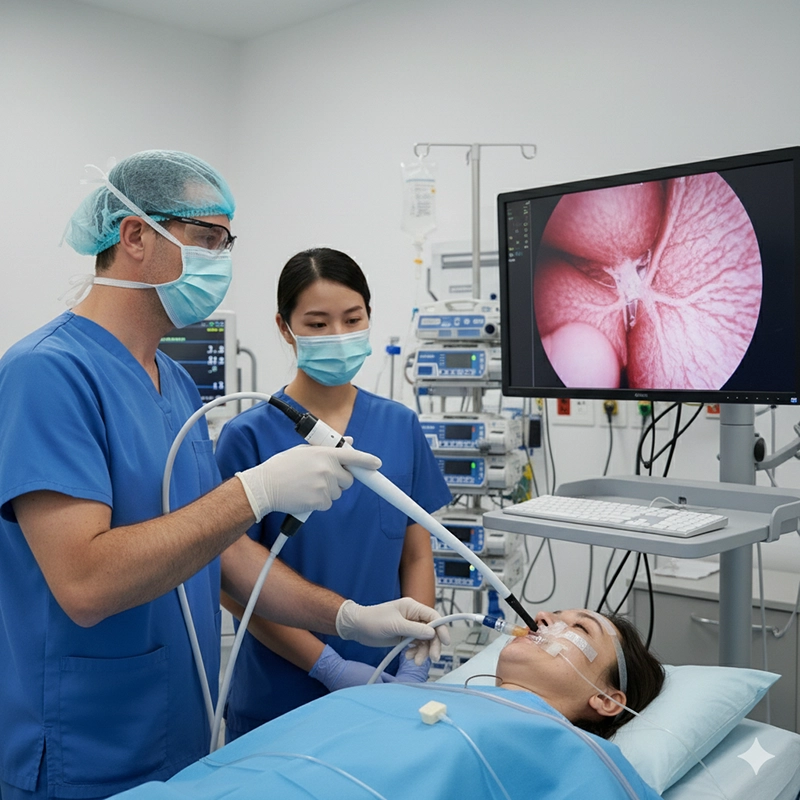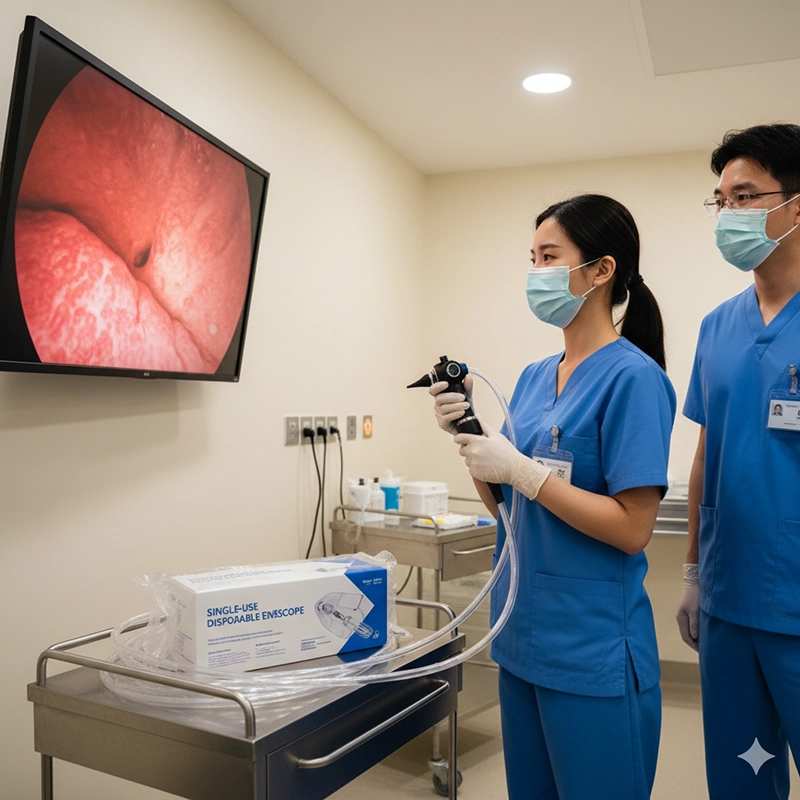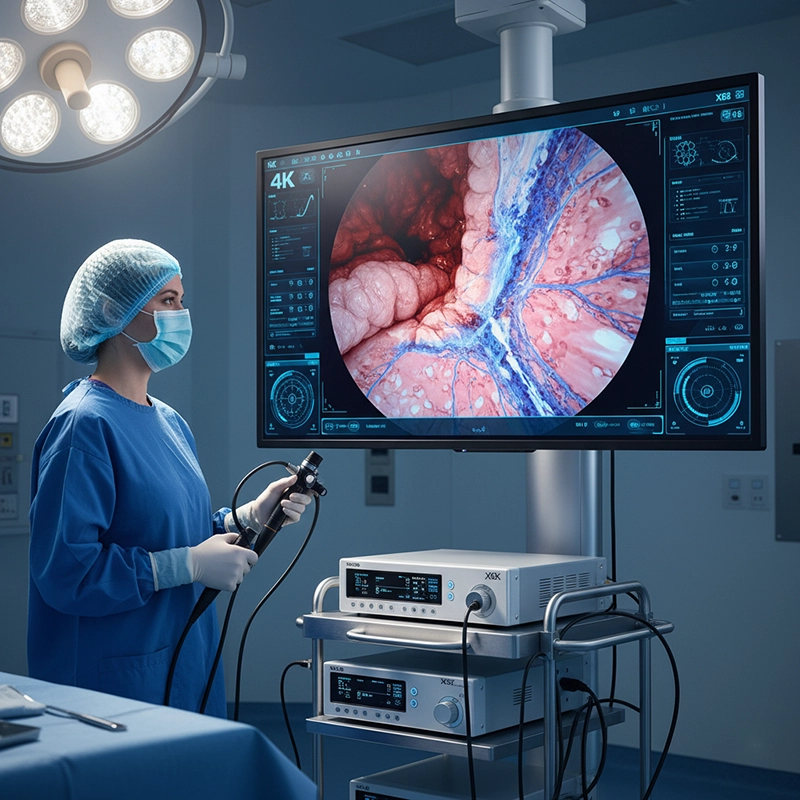Table of Contents
Not so long ago, surgical endoscopes were handcrafted instruments—delicate, temperamental, and sometimes unreliable. Each lens was aligned manually under dim factory lamps, and consistency depended on the technician’s steady hands. Fast-forward to today, and the story inside the XBX factory looks entirely different. Robots, precision sensors, and AI calibration tables hum together in a climate-controlled production line, creating surgical endoscopes that are identical down to the micron. The transformation is stunning: the artistry of the past has evolved into the science of predictability.
So yes, something fundamental has changed. The XBX surgical endoscope isn’t just sharper—it feels smarter. When surgeons pick up one in the operating room, they notice how light it is, how smoothly the control section moves, and how the image instantly snaps into focus. That’s no coincidence; it’s the result of an intentional redesign meant to align engineering precision with human instinct. In a sense, the XBX device behaves more like an extension of the surgeon’s vision than a piece of hardware.
Dr. Kim, an orthopedic surgeon in Seoul, once said, “It’s strange to think about it, but the scope feels alive—it responds faster than I expect.” That responsiveness is the quiet revolution behind modern XBX surgical endoscopes. The control algorithm compensates for minute hand tremors, while the lens housing adjusts for micro temperature shifts during lengthy procedures. These refinements make the difference between an ordinary view and one that feels immersive.
Let’s imagine two factory floors. On one side, a craftsman in 1998 uses tweezers and magnifying glasses to fit lenses into brass tubes. On the other, in 2025, the XBX facility glows with cleanroom light, where alignment robots position optical modules with submicron accuracy. Every step is recorded digitally—no guesswork, no “good enough.” This shift from artisanal assembly to data-driven precision has redefined quality control for surgical endoscopes.
The reason for this shift is simple: surgeons demand zero variation. A small deviation in optical alignment can mean the difference between a clean image and a distorted one. By using digital torque mapping and automated leak testing, XBX ensures every surgical endoscope behaves the same way on day one as it will on day one hundred. Consistency, once an aspiration, has become a measurable reality.
Think of a hospital’s operating room as a theater of precision—where every second and every movement count. In that space, the XBX surgical endoscope is designed to blend technology with intuition. The 4K imaging sensor provides extraordinary clarity, but what truly changes the workflow is its color accuracy and light balance. Surgeons can distinguish tissue boundaries with ease, which means smaller incisions and faster recovery times for patients.
Here’s a small but powerful example. In an orthopedic case involving a meniscus repair, the surgical team noticed they could lower the brightness of the monitor by 20% without losing visual definition. Why? Because the XBX optical coating captures and transmits light more efficiently than older scopes. Less glare, less fatigue, more precision. That’s what modernization feels like in real surgery.
What’s easy to overlook is that the XBX surgical endoscope isn’t a standalone gadget—it’s part of a complete endoscopic ecosystem. From the 4K camera head to the processor and light source, each piece is designed to communicate seamlessly. So when a surgeon adjusts white balance, the processor, LED source, and monitor respond in harmony. It’s a quiet dance of technology that keeps the surgeon focused on the patient, not the settings menu.
And yes, XBX designs every component in-house. The optics, electronics, even the waterproof seals come from its integrated production lines. The result is a product that doesn’t just meet standards—it sets them. Hospitals in Europe and Asia report lower repair rates and higher uptime across multiple departments using XBX surgical endoscopes.
It’s tempting to see this as just another upgrade in medical imaging—but it’s not. The shift toward smarter, more consistent surgical endoscopes reshapes how hospitals plan surgeries, manage inventory, and train staff. Imagine a hospital where every OR uses identical imaging behavior; where surgeons can switch rooms and instantly feel at home. That’s the kind of predictability XBX aims for.
The story of endoscopy has always been about visibility—but now it’s also about connection. Surgeons connect with devices that anticipate their moves; hospitals connect with data that predicts maintenance needs. The result is not only better care but a quieter confidence during the most complex procedures.
XBX engineers are already developing AI-assisted surgical endoscopes capable of highlighting blood vessels in real time. Imagine a scope that suggests the safest dissection path or alerts a surgeon to subtle color changes indicating tissue stress. It sounds futuristic, but prototypes already exist inside XBX’s R&D division. The future of surgery isn’t about replacing skill—it’s about amplifying it.
So yes, the evolution of the surgical endoscope isn’t just about sharper images—it’s about giving doctors the tools to see what once seemed invisible. And maybe that’s the most human part of all: technology designed not to outshine the surgeon, but to help them see more clearly.
If surgical instruments could tell stories, the XBX surgical endoscope would speak of precision, teamwork, and quiet innovation. The question for readers is simple: when technology finally disappears into intuition, is it still a tool—or has it become a partner in healing?
Older surgical endoscopes were handcrafted, and their quality often depended on the technician’s skill. The XBX surgical endoscope, by contrast, is produced in fully automated cleanrooms with robotic alignment systems and AI calibration. This results in perfectly consistent optical quality and more durable construction for every unit.
The device provides ultra-clear 4K visualization, natural color tones, and minimal video delay. These details help surgeons differentiate tissues more accurately and perform delicate procedures with confidence. Many doctors say it feels like an extension of their own eyesight.
XBX endoscopes are used in orthopedic, laparoscopic, ENT, gynecologic, and general surgical procedures. The same imaging system can adapt to different specialties, giving hospitals flexible coverage across multiple departments.
Absolutely. Because the manufacturing process eliminates alignment variation, there are fewer repairs and recalibrations needed. Hospitals using XBX surgical endoscopes report reduced downtime and a lower total cost of ownership compared to older-generation models.
Copyright © 2025.Geekvalue All rights reserved.Technical Support:TiaoQingCMS